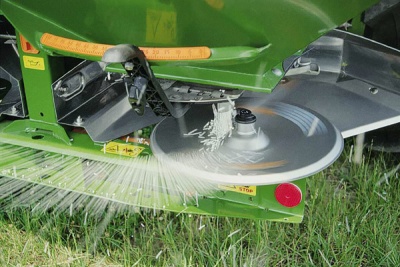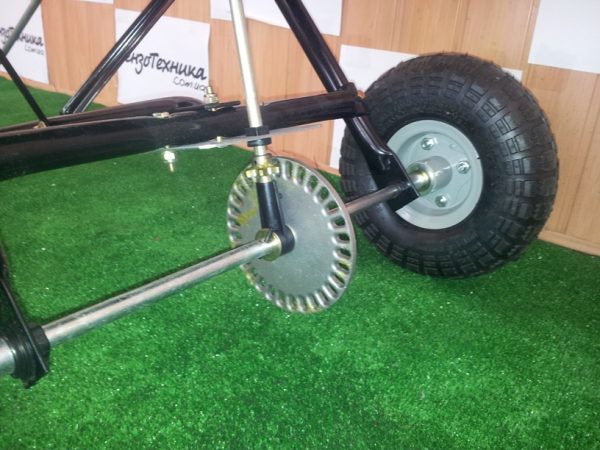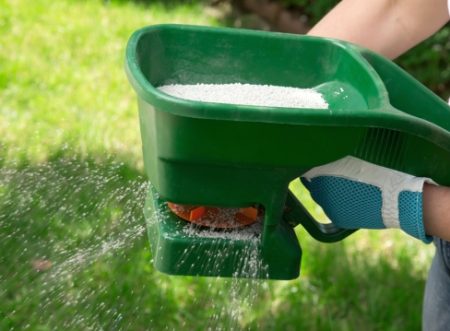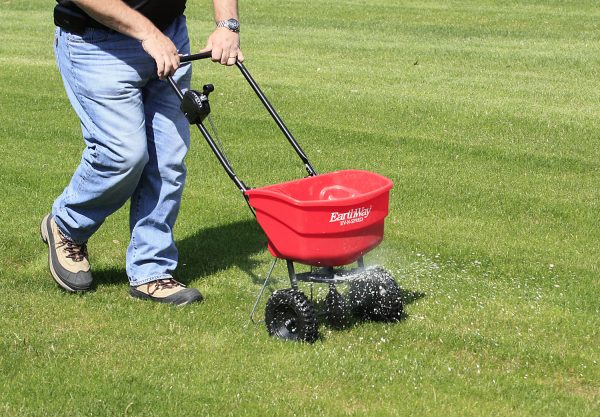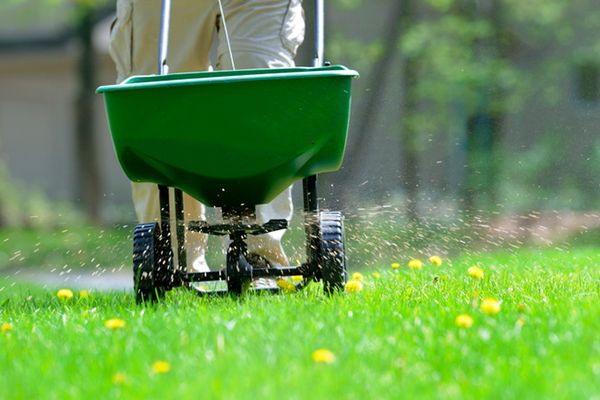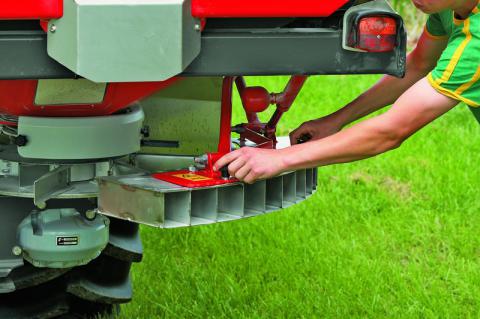What are fertilizer spreaders: strengths and weaknesses
Content
Fertilizer Machine Types
The mechanisms used in the process of fertilizing the soil are divided not only by the type of fertilizer applied, they have different functions. There are devices for mixing, grinding, transporting fertilizers. Actually the fertilizer spreader itself can be created to apply only granular or fine-fraction dusty dressings. There are devices for manure or liquid fertilizers.
There are self-propelled mechanisms, and there are different types of attachment to a tractor that transports them across the field: mounted, trailed and semi-trailed. In a small area, a manual fertilizer spreader can be used. It can even be homemade, made with your own hands on the basis of a wheelbarrow or trolley. Their spreading principle can also be different: centrifugal, pendulum and pneumatic.
Direct appointment
The direct purpose of the spreader is to minimize human participation in the hard exhausting labor of cultivating the land. Since agricultural land is depleted at least 2 times a year - in autumn and spring, farmers are forced to apply fertilizers. It is better if it is done by a professional technician under the guidance of a person. On our fields you can see the equipment of the German company Rauch. Self-propelled and trailed fertilizer spreaders from this manufacturer are very reliable. The simplicity of the design and the use of only high-quality materials ensure long-term trouble-free operation, accurate metering and uniform flow of fertilizers into the soil over the entire working width. This technique does not allow overdose or unauthorized changes in concentration with changes in movement speed or terrain level.
Machines Prospread, Easypread, Protwin Slinger, manufactured by the French corporation Kuhn, have side and rear ejection devices. They provide accurate dosing and uniformity of top dressing in the soil. They have models with a hydraulic piston-pusher, the designs of which do without chains, that is, unnecessary moving parts. This French manufacturer encourages its customers to extend the service, subject to the correct operation of the equipment.
Units of the Danish brand Bogballe are very easy to operate, because they have a minimum number of adjustments. The spreading rate is set by moving one handle. When spreading fertilizers, the discs rotate towards each other, this feature, together with the special shape of the blades, ensures the necessary uniformity of the area coverage. The machines ensure perfect distribution of mixes at the edge of the field, not just in the middle. The bunker is equipped with screens for sifting, which prevents lumps or too coarse fractions from entering the field.
The German company Güstrower offers models with a large working area - up to 40 m. They are very rational with the German frugality of expensive fertilizing.They can be adjusted to evenly spread different amounts of fertilizer mixtures: from 40 to 16,000 kg per 1 ha. Fertilizers can be used in a variety of ways: loose, lumpy, humus, bird droppings, compost. The high flight path allows you to work not only on an unseeded field, but even among grown plants. There are special devices that allow you to work among the rows of vegetables. The hydraulics drives the disks, the on-board computer communicates in 3 languages - German, English, Russian.
Not only bulk chemicals, but also compost, manure, bird droppings, lime, bone meal, peat can be scattered by the equipment of the Polish company Unia. Carrying capacity is provided from 5.5 to 10 tons. The Tytan 18 has wide wheels that make it easy to work on wet, slippery fields. The pendulum spreaders of the Norwegian manufacturer Kverneland are well known all over the world. They are produced at a factory in the Netherlands, like more traditional discs. They have electronic control systems, for control it is not necessary to leave the tractor cab at all, and a special corrective summer resident ensures uniformity of work on hills, as on a plain.
The most famous manufacturer of agricultural machinery, Amazone, also produces many models of fertilizer spreaders.
They are characterized by working widths from 10 to 52 m, bunker volumes from 1000 to 4200 liters. Some models have the ability to weigh mixtures and determine the optimal rate. A universal computer with various useful functions has been developed for all equipment.
Video "How the device works"
In this video you can see how the device works and what its principle is.
Advantages and disadvantages
The main advantage of this technique is the ability to apply top dressing in large areas, fast transportation and distribution over the field of several tons (or several tens of tons) of fertilizers necessary for plants. It is completely impossible to do it manually. Mechanical fertilizer spreaders distribute the mixture evenly over the field. Spreading of top dressing is carried out only during the movement of transport, be it a manual, self-propelled model or a model attached to a tractor. The most advanced models can be programmed so that different areas receive the fertilizer concentration they need. The units can be used not only for their intended purpose. They will help to sow the field, scatter sand and other bulk materials.
The main disadvantage is the price of such devices. Therefore, some craftsmen try to make a manual spreader with their own hands. Such a self-made unit can cope with small areas, but in a large farm it is better to have a mechanism from a good manufacturer. Among the variety of models and manufacturers, you can choose exactly the one that will perfectly cope with the work on your farm, even if its payback stretches over several years.
Device
The hand device has to be pushed across the field, which is not very convenient. The mounted spreader is a metal frame attached to the tractor with brackets. The fertilizer trailer is attached to the frame at the rear. A hopper with two discs is installed on the frame, they rotate thanks to the tractor shaft, the centrifugal force forces the fertilizer to be scattered.
The trailed fertilizer spreader is equipped with a special hopper. It contains the auger, the movement of which determines the movement of the mixture. The speed of the auger can be controlled, this allows you to adjust the flow of the fertilizer mixture depending on the required concentration in different areas. Sometimes a restrictive plate, a protective awning, a container for sorting substances are additionally installed. The self-propelled sprinkler is usually used to apply liquid organic fertilizers.It is equipped with two consoles made of duralumin pipes, on which special heads are located, which produce spraying.
A primitive manual spreader (seeder) can be homemade. It is based on a box and two running wheels. 11 holes are made in the box, they are closed with rotating plates. 2 spreaders are placed above the plates; you can also attach a turner. When the wheels are moving, rotation is applied to the plates, to the shaft of the spreader and the agitator. This self-made design forces the fertilizer from the box to fall onto the rotating plates, and from them onto the ground with relative uniformity.
Video "Manual device for the garden and vegetable garden"
Video review of the manual spreader, which can be used even in a small vegetable garden or garden.

